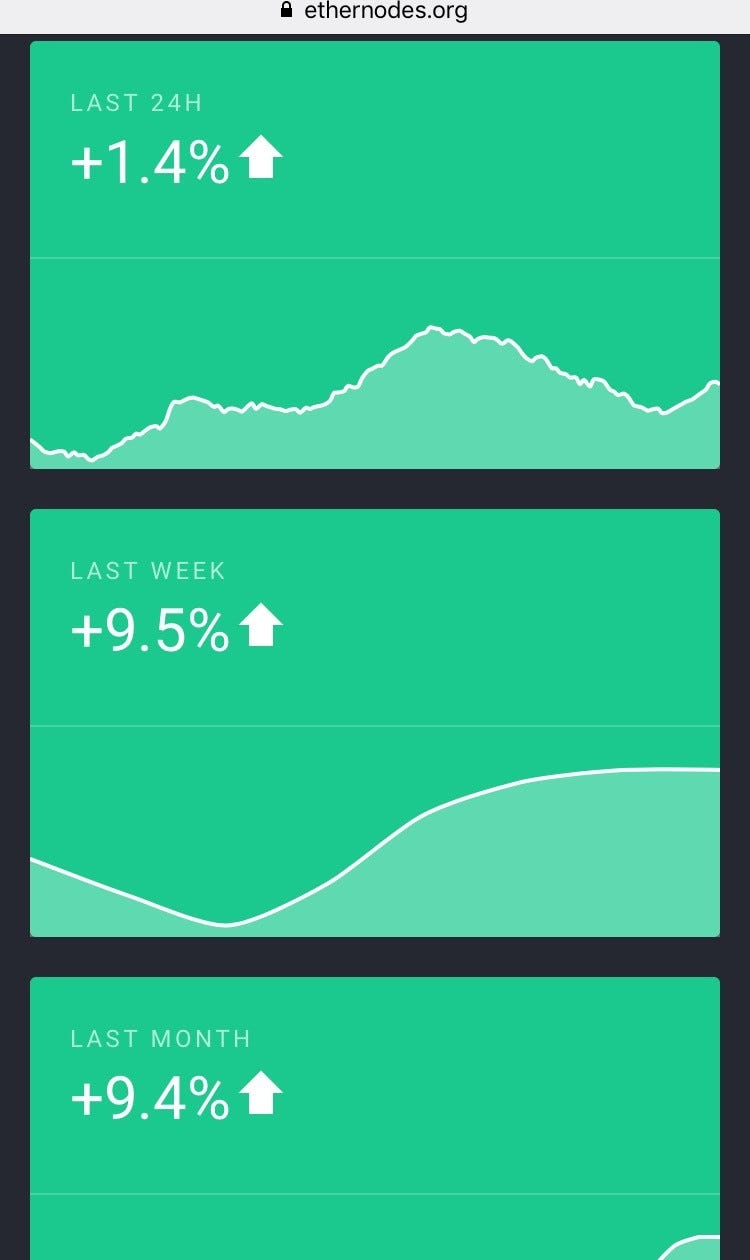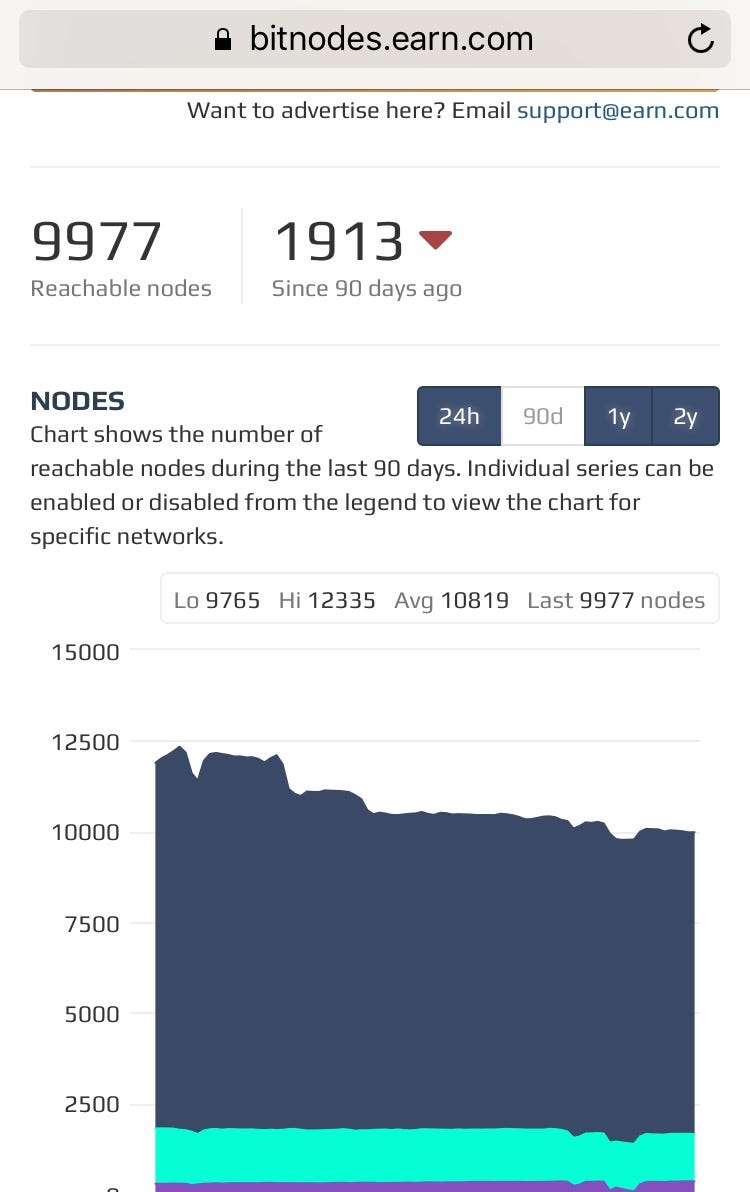Latest news about Bitcoin and all cryptocurrencies. Your daily crypto news habit.
 Dazed and Confused
Dazed and Confused
I read a couple of thoughtful and informative posts from StopAndDecrypt regarding centralization increasing as a a function of growing compute requirements to run a node.
Do I believe this creeping centralization is a big problem? No. But do I think it is actually happening? Also, no. In this note, I’m going to focus on the incentives to run a node.
Let’s condense the argument stated here :
- we want decentralization
- decentralization means growing node count over time
- With a set blocksize that never goes up, as technology grows, it becomes easier and easier to run a node, thus the total node count will go up over time ( which is the case for Bitcoin and not the case for Ethereum ). Without a set blocksize, the cost to run a node will go up faster than technology improves.
- Therefore, over time Bitcoin node count will go up and Ethereum count will go down
The trouble with this argument is it is circular in a blockchainy sort of way. It is a bit like saying “Nobody will drive in Manhattan in the future because there will be too much traffic”.
Why Does Anyone Run a Node?
Let’s go through the list here. Let’s dispense with silly arguments such as “it’s not that hard and it’s not that expensive”, which do not answer the question: why would anybody do it in the first place? The main reasons are
- Helps The Network
- Safety
Argument 1 is valid, but we are all familiar with the free-rider problem. Network quality is a public good, therefore it does not create a sufficient private incentive to run a node. Maybe, if you are a hardcore enthusiast, but that’s not enough to support network growth over time.
Argument 2 is more important. By running a node, one can avoid relying on a third party to verify that the network is operating properly. What sort of player may have sufficient incentives to care about this issue enough to overcome the free-rider problem? It’s the type of player that has a large financial stake in the network health. Which brings us to the next section.
Adoption
The key question to ask if we want to understand whether there will be more nodes or not is, what is the FINANCIAL INCENTIVE for people to run a node? Clearly, financial incentives include costs, which will grow as bandwidth requirements and compute requirements grow and as all costs tend to do over time. But the incentives involve not just costs, but also benefits. The incentive is the difference between benefits and costs.
And the key item that will impact these financial incentives is ADOPTION. Are people using a particular blockchain to pay for things or to build real world applications? if the answer is yes, then the value of the benefits of running a node will go up and will exceed the cost. And if the answer is no, then no matter how cheap compute power is, the node count will slowly decrease over time. Note that the benefit of running a node could be direct ( by getting paid for staking or some such nonsense ), or indirect - because your organization cares about the integrity of the chain a lot, if it is using it a lot. Of course, the more direct it is, the bigger the incentive to run a node.
If the analysis above is correct, then network that don’t show sufficient adoption, will experience slow decrease in the number of nodes.
State of the World
Let’s look at the actual number of nodes for Ethereum and Bitcoin. I realize that these numbers are not directly comparable, however, I think the CHANGE in the numbers is at least somewhat informative.
Decentralization Confusion was originally published in Hacker Noon on Medium, where people are continuing the conversation by highlighting and responding to this story.
Disclaimer
The views and opinions expressed in this article are solely those of the authors and do not reflect the views of Bitcoin Insider. Every investment and trading move involves risk - this is especially true for cryptocurrencies given their volatility. We strongly advise our readers to conduct their own research when making a decision.

